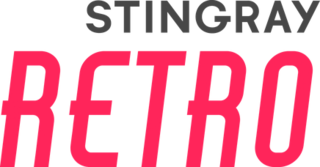
CHUM Limited was a Canadian media company based in Toronto, Ontario in operation from 1945 to 2007. The company was founded in 1945 as York Broadcasters Limited when it launched CHUM-AM 1050 but was acquired by salesman Allan Waters in 1954. CHUM had expanded to and owned 33 radio stations across Canada under its CHUM Radio Network division and also owned other radio stations.

Much is a Canadian English language discretionary specialty channel owned by BCE Inc. through its Bell Media subsidiary that airs programming aimed at teenagers and young adults. Prior to 2013, the channel was officially known as MuchMusic, though "Much" has been the branding most commonly seen on-air since 1997.

Max is a Canadian French language specialty channel owned by Remstar Media Group, a division of Remstar. The channel primarily broadcasts entertainment programming, focusing on scripted television series and films.

Bell Media Inc. is a Canadian media conglomerate that is the mass media subsidiary of BCE Inc.. Its operations include national television broadcasting and production, radio broadcasting, digital media and Internet properties.
CTV 2 is a Canadian English-language television system owned by the Bell Media subsidiary of BCE Inc. The system consists of four terrestrial owned-and-operated television stations (O&Os) in Ontario, one in British Columbia and two regional cable television channels, one in Atlantic Canada and the other in Alberta.

MTV is a Canadian English-language discretionary specialty channel owned by Bell Media with the name and branding used under a licensing agreement with Paramount Global. The channel is devoted to talk, lifestyle and documentary programming, and also airs some scripted programming.

BookTelevision was a Canadian English language specialty channel owned by Bell Media.

CTV Drama Channel is a Canadian English language discretionary specialty channel owned by Bell Media.

Investigation Discovery is a Canadian Discretionary service owned by Bell Media. based of the U.S. cable network of the same name, the channel focuses on true crime programming.

Comedy Gold, formerly known as TV Land Canada was a Canadian English language specialty channel that was owned by Bell Media focused on sitcoms and sketch comedy programs from the 1970s to 1990s.
Sundance Channel was a Canadian English language Category B specialty channel owned by Corus Entertainment that aired various films.

Fashion Television, also known as Fashion Television Channel, was a Canadian English language specialty channel owned by Bell Media.

Oprah Winfrey Network, more commonly shortened to OWN, is a Canadian English language discretionary service channel owned by Corus Entertainment. The channel was launched in September 1, 1999 as Canadian Learning Television (CLT) by Learning and Skills Television of Alberta, Ltd., then held by CHUM Limited. The network's owner, Corus Entertainment, licenses the OWN brand and its American programming from Warner Bros. Discovery.
Cooking Channel is a Canadian English language discretionary specialty channel majority-owned by Corus Entertainment. Dedicated to programming related to food and cooking, it serves as a spin-off of Food Network.

Stingray Vibe is a Canadian English language discretionary specialty channel owned by Stingray Digital. The channel broadcasts hip-hop, rap, R&B, rhythmic pop and EDM/Dance music videos.

Stingray Retro is a Canadian English language discretionary specialty channel owned by the Stingray Group. The channel mainly broadcasts music videos from the 1980s to the early 2010s, with some occasional pre-1980s music videos played at times.

Stingray Juicebox is a Canadian discretionary music specialty channel owned by Stingray Group. It is a commercial-free channel that broadcasts music and music videos aimed towards children and teens.

Stingray Loud is a Canadian English language discretionary specialty channel owned by Stingray Digital. The channel broadcasts music videos relating to rock, modern rock, alternative, punk, and heavy metal.
In 2007, significant ownership changes occurred in Canada's broadcast television industry, involving nearly every private English-language network and television system. In addition to the shuffling of network affiliations and mergers involving various networks, several new television stations and rebroadcast transmitters also signed on the air.
The current incarnation of E! is a Canadian English language specialty channel owned by Bell Media. based on the U.S. cable network of the same name, E! is devoted to entertainment programming including news, film, television, celebrities and fashion. Comcast / NBCUniversal licenses the name and programming for the channel under a brand licensing agreement, but it doesn't hold an ownership interest.

















